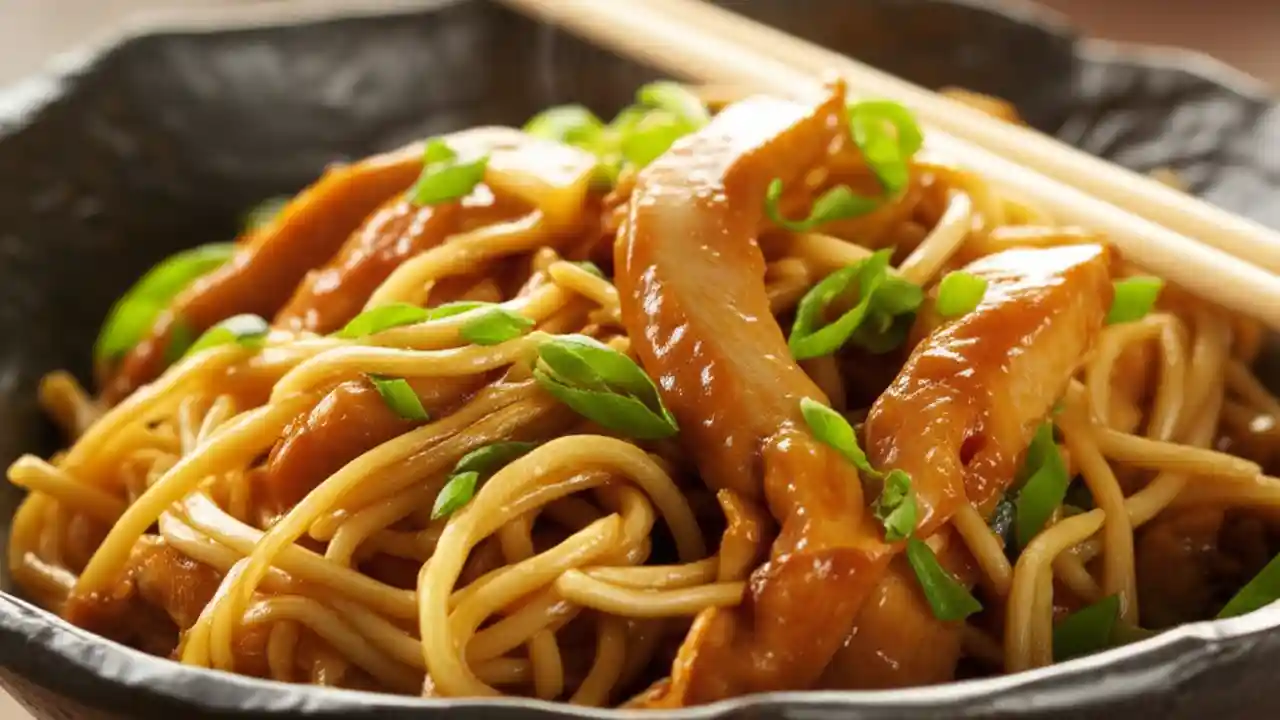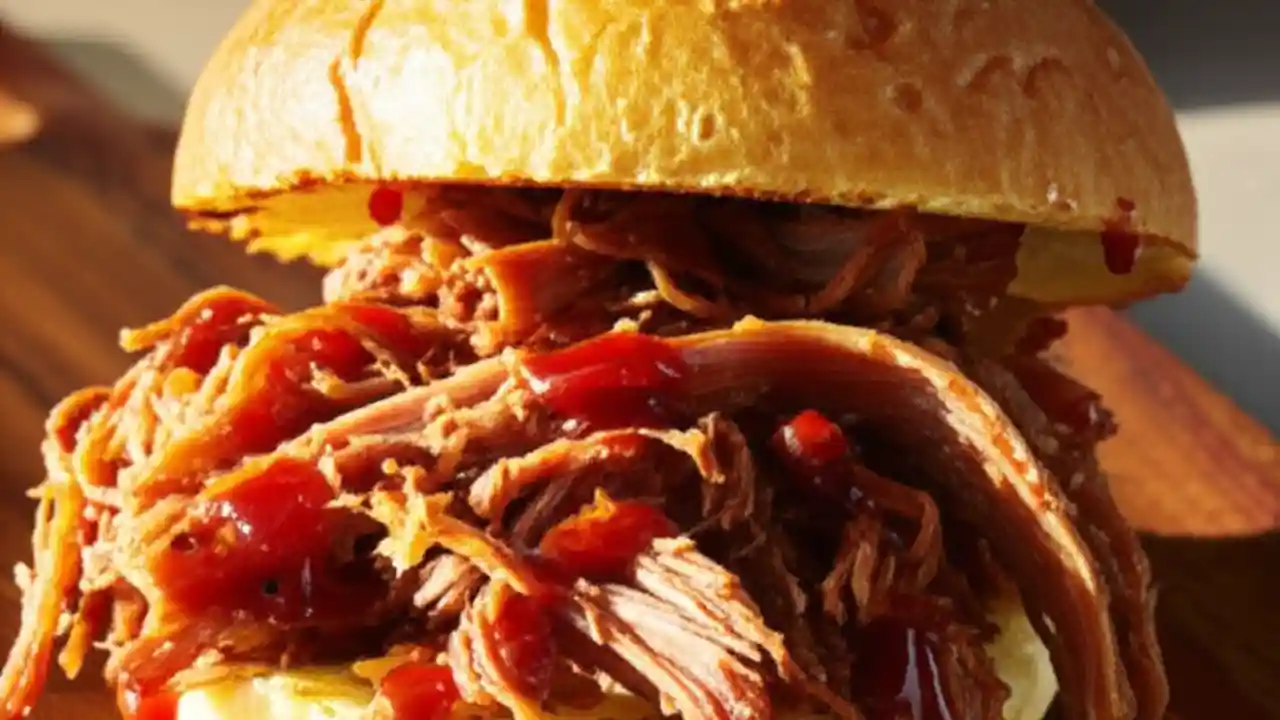I’ve spent years chasing that perfect, restaurant-quality Mongolian Beef at home. For the longest time, my attempts ended in disappointment: the beef was either tough and chewy, or the sauce was a one-note, overly sweet syrup. It was frustrating. I knew there had to be a secret I was missing, something beyond just a good cut of meat.
The breakthrough came from a simple, yet powerful, technique: velveting the beef with baking soda and cornstarch. This isn’t just a step; it’s the absolute game-changer. The baking soda tenderizes the muscle fibers on a chemical level, and the cornstarch creates a microscopic, protective coating that seals in the juices during the high-heat sear. It’s the reason why takeout beef is so incredibly tender.
By mastering this one technique, I unlocked the door to creating a Mongolian Beef that’s not just “good for homemade,” but is genuinely better than most restaurants. This recipe is the culmination of that journey. I promise you’ll get:
- Incredibly Tender Beef: Every single bite will be succulent and melt-in-your-mouth tender, never tough or chewy.
- A Perfectly Balanced Sauce: A rich, savory, and glossy sauce with the perfect harmony of salty, sweet, and aromatic flavors from fresh ginger and garlic. It coats the beef without being gloopy.
- A 30-Minute Meal: From prep to plate, this entire dish comes together in less than 30 minutes, making it perfect for a busy weeknight.
Forget disappointing takeout. Let’s make the best Mongolian Beef you’ve ever had, right in your own kitchen. It’s so much simpler than you think.
Table of Contents
Family Feedback
“James, this is it. This is THE Mongolian Beef. I’ve tried so many recipes online and they’re always a letdown, but yours is incredible. The beef is so tender it’s unreal! My husband, who is the pickiest eater on the planet, asked for seconds and then took the leftovers for lunch the next day. That never happens. This is officially in our weekly rotation.”
“I was always intimidated by stir-fries because everything happens so fast, but your instructions were so clear and easy to follow. The tip about not overcrowding the pan made all the difference. The sauce is just… wow. Savory, a little sweet, and that fresh ginger kick is amazing. Tastes like it came from a high-end restaurant.”
Recipe Card
| Course | Dinner, Main Course, Beef |
| Cuisine | Asian, American |
| Featuring | Velveted Beef, Ginger Garlic Sauce, Quick Stir-Fry, One-Pan Meal, Takeout-Style |
| Prep Time | 15 minutes |
| Cook Time | 10 minutes |
| Total Time | 25 minutes |
| Servings | 4 servings |
| Calories | 485 kcal |
| Author | James |
Ingredients
- 1.5 lbs (680g) flank steak, thinly sliced against the grain
- 1 tsp baking soda
- 3 tbsp cornstarch, divided
- 1/2 cup low-sodium soy sauce
- 1/2 cup water
- 1/2 cup packed dark brown sugar
- 1 tbsp rice vinegar
- 4 cloves garlic, finely minced
- 1 tbsp fresh ginger, grated
- 1/4 cup vegetable oil or other high-smoke point oil, divided
- 2 green onions (scallions), cut into 1-inch pieces, plus more for garnish
- 1 tsp sesame oil (optional, for finishing)
- Toasted sesame seeds, for garnish
- Steamed rice, for serving
A Note on Key Ingredients: Flank steak is the classic choice for its flavor and texture, but sirloin or skirt steak also work well. Using low-sodium soy sauce is crucial; it allows you to control the saltiness while still getting that deep umami flavor. Regular soy sauce can easily make the final dish too salty. The dark brown sugar provides a richer, more molasses-like sweetness than light brown sugar, which is key to the authentic sauce flavor.
Instructions
- Velvet the Beef: Place the thinly sliced flank steak in a medium bowl. Sprinkle with baking soda and 1 tablespoon of cornstarch. Use your hands to toss thoroughly, ensuring every piece is lightly coated. Set aside for 15 minutes while you prepare the other ingredients. This is the most important step for tender beef.
- Prepare the Sauce: In a separate small bowl or liquid measuring cup, whisk together the low-sodium soy sauce, water, dark brown sugar, rice vinegar, and the remaining 2 tablespoons of cornstarch. Whisk until the cornstarch and sugar are fully dissolved. Set aside.
- Sear the Beef: Heat 2 tablespoons of vegetable oil in a large skillet or wok over high heat until it shimmers. Add half of the beef to the pan in a single layer. Do not overcrowd the pan. Cook for 60-90 seconds per side, just until browned and a crust forms. The beef will not be cooked through. Remove the seared beef with a slotted spoon and place it on a plate. Repeat with the remaining oil and beef.
- Sauté the Aromatics: Reduce the heat to medium. Add the minced garlic and grated ginger to the skillet and cook for about 30 seconds until fragrant, stirring constantly to prevent burning.
- Create the Sauce: Give the sauce mixture a quick re-whisk (the cornstarch will have settled) and pour it into the skillet. Add the 1-inch pieces of green onion. Bring the sauce to a simmer, stirring constantly. It will thicken into a beautiful, glossy sauce in about 1-2 minutes.
- Combine and Finish: Return the seared beef and any accumulated juices back to the skillet. Toss everything together to coat the beef in the glorious sauce. Let it cook for another minute for the flavors to meld. Remove from heat and stir in the optional sesame oil.
- Serve Immediately: Serve the Mongolian Beef hot over a bed of fluffy steamed rice. Garnish with additional sliced green onions and toasted sesame seeds.
Secrets to Restaurant-Quality Mongolian Beef
After making this recipe dozens of times, I’ve learned a few things that separate a good result from a great one. Here are the secrets that will guarantee your success every single time.
- Slice Against the Grain, and Slice Thin: For maximum tenderness, you must slice the beef against the grain. Look for the long muscle fibers running down the steak and cut perpendicular to them. Slicing it very thinly (about 1/4-inch or 6mm) is just as important, as it allows the beef to cook quickly and absorb the sauce beautifully. Partially freezing the steak for 20-30 minutes makes it much easier to slice thinly.
- My Biggest Mistake (Don’t Repeat It!): For a long time, I would add the sauce to a screaming hot pan right after searing the beef. This was a huge error. The cornstarch in the sauce would seize up instantly, creating lumps and a gummy texture. The fix is simple: always lower the heat to medium *before* adding the sauce. This allows it to thicken gradually and evenly into that perfect, glossy consistency.
- High Heat is Your Friend (For Searing): The goal when searing the beef is to get a deep brown crust on the outside as quickly as possible without overcooking the inside. This requires high heat. Make sure your oil is shimmering hot before the beef ever touches the pan. This quick, intense sear is what locks in the juices that the velveting process protected.
- Get Creative with Vegetables: While classic Mongolian Beef is simple, it’s a fantastic base for adding vegetables. For a more complete one-pan meal, try adding sliced onions, bell peppers (red or green), or broccoli florets. Sauté them after the aromatics for a few minutes until tender-crisp, then proceed with adding the sauce and beef.
- Storage and Reheating: Store leftovers in an airtight container in the refrigerator for up to 3 days. The sauce will thicken slightly when cold. To reheat, gently warm it in a skillet over medium-low heat with a splash of water to loosen the sauce, or microwave in 30-second intervals until hot. The beef stays surprisingly tender upon reheating.
Nutrition Facts (Per Serving)
| Calories | Fat | Carbs | Protein |
|---|---|---|---|
| 485 kcal | 22 g | 36 g | 38 g |
Please note that nutrition information is an estimate and can vary based on the specific ingredients used. This calculation does not include serving rice.
Frequently Asked Questions
Why is my Mongolian Beef tough?
The most common reasons for tough Mongolian beef are not slicing the steak against the grain, slicing it too thickly, or skipping the velveting step. Velveting with baking soda and cornstarch is the single most effective technique to guarantee tender beef. Overcrowding the pan during searing can also cause the beef to steam instead of sear, leading to a tougher texture.
Can I use a different cut of beef for this recipe?
Absolutely. While flank steak is ideal, this recipe works wonderfully with other cuts. Top sirloin is an excellent, tender alternative. Skirt steak is also a great choice, known for its rich, beefy flavor, but be extra diligent about slicing it thinly against its very prominent grain. You could even use flat iron steak.
Is this Simple Mongolian Beef Recipe spicy?
No, this recipe is not spicy. It’s savory and slightly sweet, with a strong aromatic flavor from ginger and garlic. If you prefer a bit of heat, it’s very easy to add! You can add 1/2 to 1 teaspoon of red pepper flakes along with the garlic and ginger, or add a squirt of sriracha or other chili-garlic sauce into the sauce mixture before pouring it into the pan.
How can I make the sauce thicker or thinner?
This sauce is designed to be a perfect coating consistency, but you can easily adjust it. To make it thicker, create a small slurry by mixing 1 teaspoon of cornstarch with 2 teaspoons of cold water, then slowly whisk it into the simmering sauce until it reaches your desired thickness. To make the sauce thinner, simply whisk in a tablespoon or two of water or low-sodium beef broth until you’re happy with the consistency.







